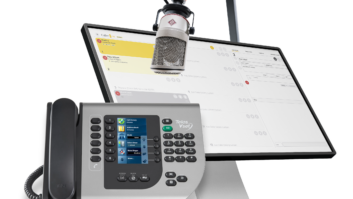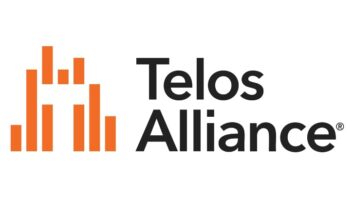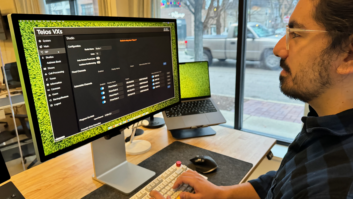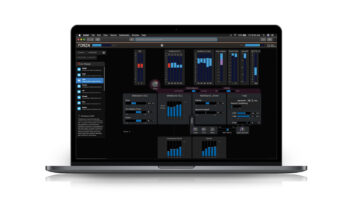COLUMBUS, Ohio — Since live radio streaming began to show up on station Web pages with Real Player, then moving on to Windows Media and the first Shoutcast streams with Winamp, it’s been a challenge to produce good-sounding streams that could rival the quality of traditional over-the-air quality. I remember trying to listen to many of those early streams only to be disappointed with both the constant buffering and the poor audio quality.
With today’s broadband availability and coding technologies, most of the problems have been solved except when it came to processing, where — unless you used a traditional FM audio processor — the quality was still lacking. With the current push towards quality rather than just being the loudest on the FM dial, it’s only a natural progression that Web processing to follow that same parallel.

PROCESSING
Streaming has become a huge part of our business strategy at 104.9 The River. Much of our “at work” listening in downtown Columbus is done on a computer, due to the fact that we are a “rimshot” station. We have also been long-time Omnia customers, preferring their FM processors over the competition, so naturally, I was excited several years ago to hear about Omnia’s software-based Web processing and encoding program, Omnia A/XE.
At the time we were using simple outboard processing into a Windows Media Encoder box that left a lot to be desired from a quality standpoint, but at the time that seemed to be pretty standard across the industry. The ability to move from Windows Media to the AAC codec was a huge improvement in quality, not to mention finally being able to include metadata, which Windows Media does not support. A/XE’s dedicated three-band software processing sounded surprisingly good as well at the time, and actually sounded a lot better than more expensive dedicated streaming solutions from other competitors.
Fast forward to the beginning of 2014 when the Omnia 9/XE software was released. Having heard much about the Omnia.9, and hearing streams being fed from the Web path of an Omnia.9, I couldn’t wait to get the software version.
When I finally did get the software in house, the interface took a lot to get used to, as it’s quite different than any other Omnia processor. Once it was set up I was blown away at just how good our stream sounded. I think the front end of the .9’s engine with the declipper and undo technology really allows the encoders to work much better.
I’ve noticed over the years that extremely dense content doesn’t do well in low-bitrate encoders, so the front end of the .9 really shines in the lower bitrates. Having said all of that, my one disappointment with the 9/XE software was that the Web encoder portion seemed actually to be a step backwards compared to the A/XE software, in that it didn’t support some of the distribution formats that the A/XE did. It felt very outdated.
DIRECTIONS
Enter the Z/IPStream X/2 and 9X/2, which rebranded the Telos Alliance Web products. The Telos Alliance has taken the older A/XE software and overhauled it to meet current needs with native support for not only Icecast/Shoutcast v2 and RTMP, but native support for HLS streaming with adaptive bitrates.
For those who may not know what this is, you need to read up on it! This is where all Web streaming is headed, as the Adobe Flash platform is slowly being phased out. We have been using HLS for over a year now (via a software solution which we had to purchase separately at that time), but had the Z/IPStream software existed then we would not have had to purchase the separate HLS software, as Z/IPStream does all the work, requiring only a simple Apache or IIS Web server.
Add to all this the choice between the traditional Omnia three-band processing of the original A/XE software (now incorporated in the Z/IPStream X/2), or the updated Omnia.9 processing of the Z/IPStream 9X/2 software, and you have the power to create the best-sounding stream with the widest compatibility across delivery platforms. Not to mention Z/IPStream Adaptive Technology, where the connection between streaming server and listener is automatically managed, dynamically adjusting bitrate and audio quality to maintain a solid connection with the best possible audio — regardless of Wi-Fi limitations or Internet behavior.
With the age of the “digital dash” upon us, there has never been a more critical time for creating a Web stream that sounds just as good, if not better, than your over-the-air FM product. The Z/IPStream 9X/2 can help you accomplish that.
For information, contact Clark Novak at the Telos Alliance in Ohio at (216) 241-7225 or visit www.telosalliance.com.












